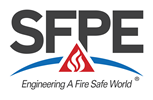Abstract
In hospitals, evacuation of those with severe movement impairments can be highly problematic – for the patients, for the staff and for the other evacuees. It is critical to understand the performance of horizontal and vertical evacuation strategies, including the means by which people with reduced mobility can be assisted in stair descent. The work presented herein quantifies the performance of trained hospital staff in evacuating people with reduced mobility and specifies algorithms to explicitly represent the dynamics of these devices within evacuation models. Data collected from 32 trials in which a test subject was evacuated through 11 floors of Ghent University Hospital using four commonly used movement assistance devices: stretcher, carry chair, evacuation chair and rescue sheet are presented and analysed. From this, performance results are calculated for both male and female assist teams that include device preparation time, horizontal speeds, vertical speeds and overtaking potential in stairwells. By deriving a device performance evaluation metric a direct comparison of the relative efficiency of each device is made. The performance results form the basis of integrating movement devices into evacuation models. To demonstrate this, the buildingEXODUS model is enhanced to represent movement devices in hospital evacuation. Moving objects, including evacuation devices, are explicitly specified in the existing model functionality. Algorithms are developed to calculate the movement of devices along corridors, through doorways and in stairway descent, including a method of geometric decomposition of the hospital geometry. This new functionality addresses the key evacuation components of repeated patient collection, and has numerous applications, both in simulating hospital evacuation and in representing evacuation of other premises that include people with reduced mobility. This is demonstrated by a series of systematic test cases designed to highlight both the validity and the predicting capability of this method. The latter can be used to significantly enhance planning and diagnostic capabilities related to the evacuation of hospital and other healthcare facilities. It should help ensure that the adoption of new procedural and structural designs are better informed and that risk assessments and evidence-based analyses are better supported by data, understanding and simulation tools in the future.
Presentation
Resources
| Paper | Presentation | ||
|---|---|---|---|
| HTML | HTML | ||
| Resources Archive File (.zip) | |||


